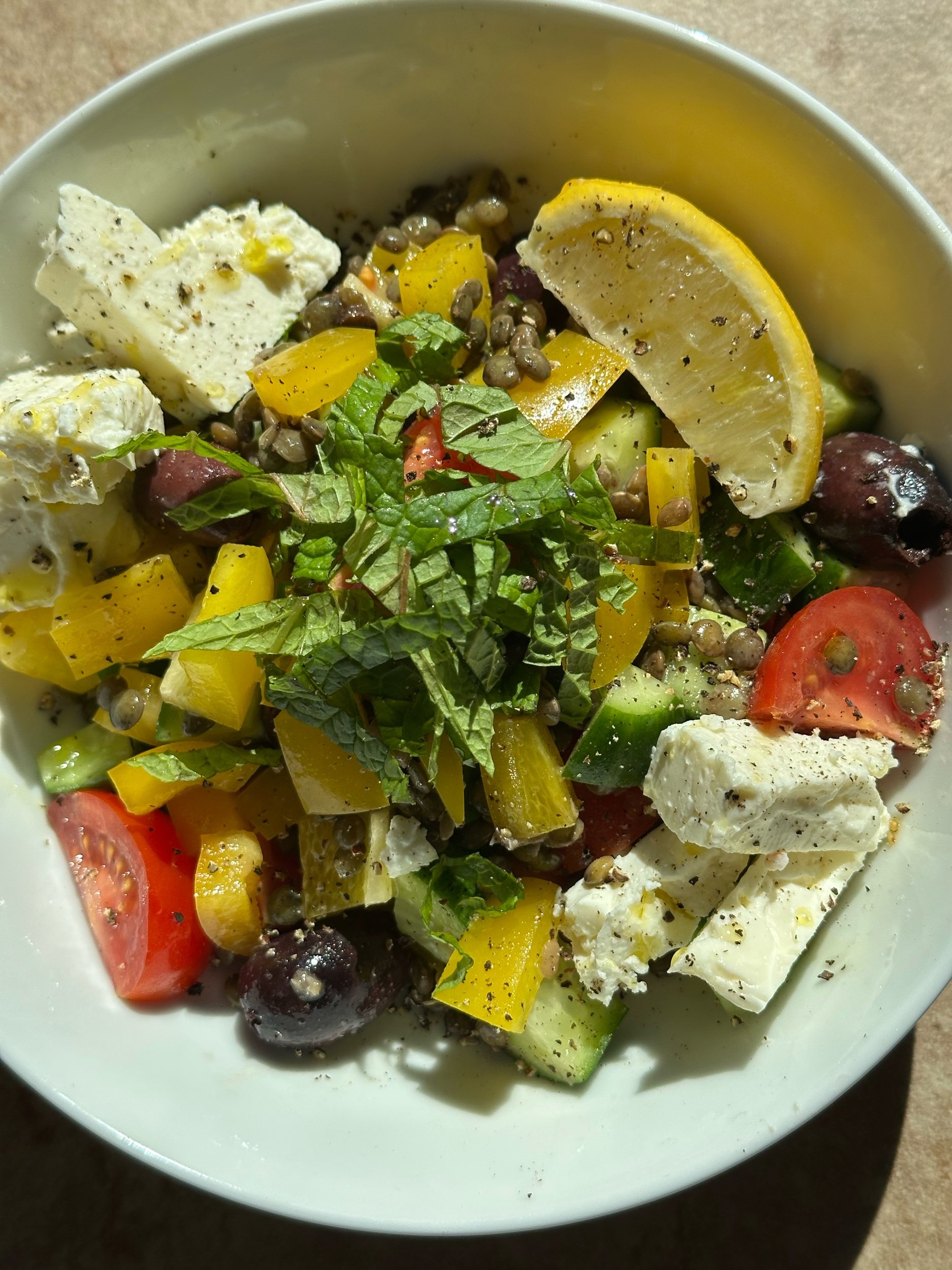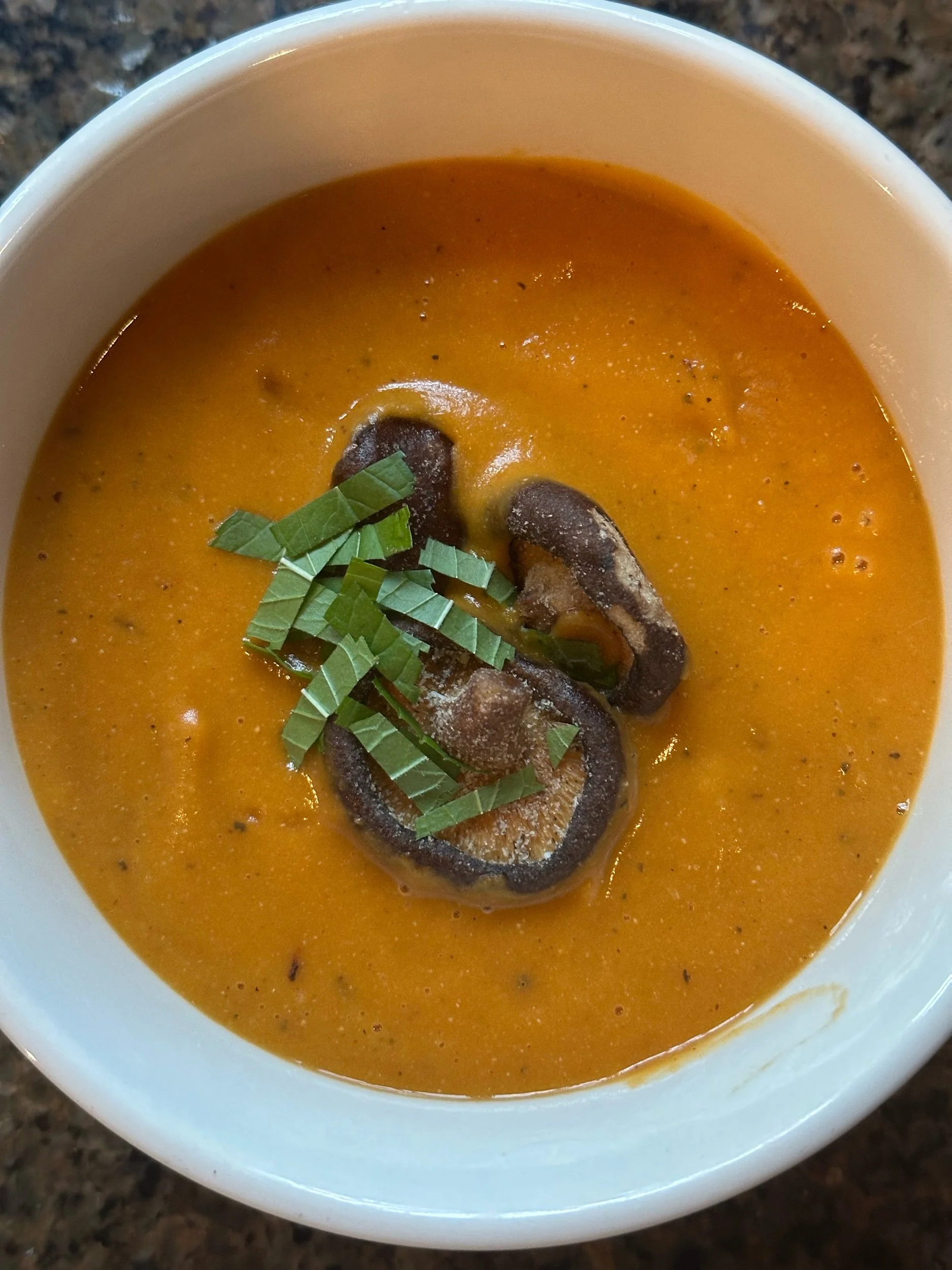Mujadarra

This is one of my favorite vegetarian meals. Many recipes for Mujadarra call for lentils and rice to be cooked together. I prefer not to avoid overcooking one of these two major ingredients. Salt and acid can often be shy in the final product so be generous with these as needed. I’d also like recommend the cookbook Mastering the At of Plant-Based Cooking by Joe Yonan. This recipe has been tweaked from this cookbook. The book has many wonderful recipes for folks trying to cook plant-based meals without sacrificing flavor.
QUANTITY AND INGREDIENTS
CARAMELIZED ONIONS
2 tablespoons olive oil
2 large yellow onions, thinly sliced (about 4 cups)
2 teaspoons fine sea salt, plus more to taste (not kosher salt)
½ teaspoon sugar
LENTILS
2 tablespoons olive oil
1 1/2 teaspoon ground cumin
2 cloves of garlic, crushed
1 teaspoon smoked paprika
1 cup (200g) French green lentils, rinsed and drained
2 cups filtered water
1 tsp fine sea salt
1 lemon, juiced
RICE
1 cup (180g) basmati rice, rinsed and drained
1 1/2 cup filtered water
1-inch (2.5cm) piece of cinnamon stick
1 bay leaf
GARNISHES AND FINISHES
¼ cup (10g) fresh flat-leaf parsley and mint, coarsely chopped
squeeze of lemon
Maldon salt
freshly ground pepper
Greek yogurt, plain
PREPARE YOUR MIS EN PLACE
1. Read and reread the recipe. Divide tasks amongst team members.
2. Gather all your ingredients and necessary equipment.
3. Prep all your wet and dry ingredients in separate bowls in preparation for cooking.
START COOKING
CARAMELIZED ONIONS
1. Heat a heavy bottomed high sided pan on medium to high heat while you quickly slice onions (thin).
2. Add 2 Tbsp olive oil, sliced onions, sea salt, and sugar. Mix well. Continue to cook on medium high heat and stir every 5 minutes. If browning occurs on the bottom of the pot, push onions off to the side and deglaze with Tbsp of water at a time. Stir back into the onions. Avoid adding too much water as this will prevent browning of the onions. This method is fairly speedy and should not take much longer than 15-20 minutes.
MAKE LENTILS
3. While onions are caramelizing, start making lentils. Heat a small to medium saucepan on low to medium heat. Add 2 Tbsp olive oil and ground cumin, paprika, and crushed garlic. Cook until fragrant, around 30 seconds. Add rinsed lentils and stir to coat. Bring to boil then add 1 tsp sea salt and stir. Bring to a simmer and cover. Cook until lentils are al dente, around 25-30 minutes. Avoiding overcooking as lentils will become mushy. Strain any excess water and then transfer lentils back into the same saucepan on low heat to burn off an excess water. Add lemon juice to taste and reduce slightly so little excess liquid remains. Take off heat and fluff with a fork.
MAKE RICE
4. Add rice and water to a medium size saucepan. Add cinnamon stick and bay leaf. Bring to boil then decrease to a simmer. Cook until rice is al dente 15 minutes. Fluff with a fork.
PUT IT TOGETHER
5. Gently combine the rice and cooked lentils. Top with caramelized onions. Garnish with chopped parsley and mint. Add a squeeze of lemon to taste. Sprinkle with Maldon salt and freshly cracked pepper. Serve with Greek yogurt as a side.
TALKING POINTS
1. French lentils (also sold as Le Puy green lentils) -unique peppery flavor and ability to retain shape with cooking. They are sold in the bulk section at Winco. Black or Beluga lentils (or caviar lentils) are very flavorful and attractive in dishes. They are not commonly sold in the bulk section. A great brand of all legumes is Rancho Gordo. They can be found online or at the Coop and Whole Foods.
Red lentils are sweet and nutty in flavor, and tend to become mushy when cooked, making them ideal for soups and curries.
Rinse the dry lentils with cool water until clear. This washes away debris (inspect for small rocks) and any excess starch which can cause excessive foaming and bloating. It improves the overall appearance and taste.
2. There is a myth that adding salt early in the cooking of legumes stalls the cooking process. It is important to add salt throughout the cooking process. The overall amount of salt added is LESS, compared to adding it at the end, AND the flavors will be distributed more evenly. This recipe is a compromise on the addition of salt.
3. It is important to rinse rice for multiple reasons. Similar to lentils and beans, rinsing washes away debris and any excess starch which can make cooked rice sticky and gummy. Rinsing may reduce the amount of arsenic, although some studies suggest either soaking rice or cooking in excess water and straining is more effective. Certain rice varieties contains less arsenic, including California basmati rice and jasmine rice. White rice has less arsenic compared to brown rice, as the bran (or outer layer) is removed in white rice.
4. Knife Skills
a. crushing, slicing, chopping garlic, making a paste
b. chopping and slicing an onion
c. chopping herbs (chiffonade mint, “give parsley a haircut”)
5. Technique
a. caramelizing onions
b. boil, then simmer





